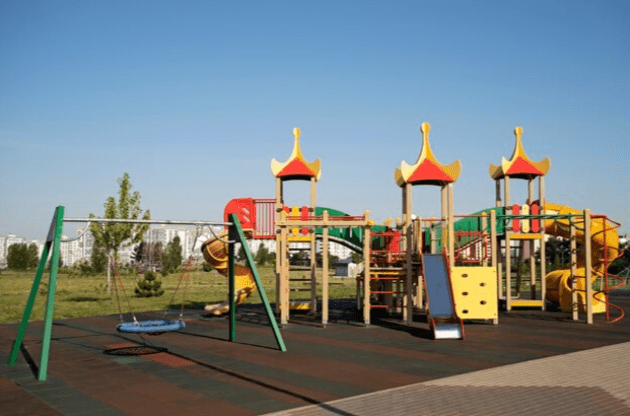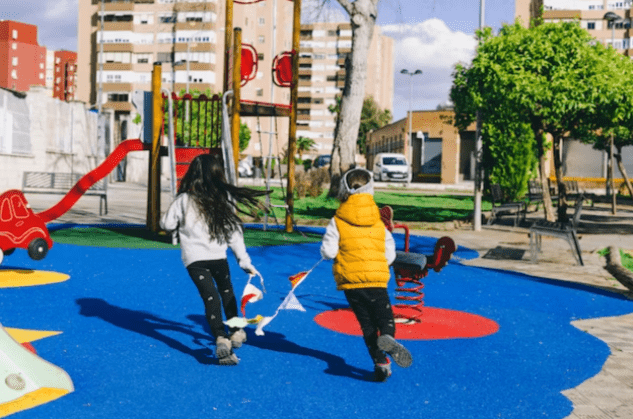Discover key strategies for designing secure, engaging safe play areas for kids. Ensure safety and fun with our comprehensive guide.
Overview
Developing secure play spaces is a top priority for community planners, educators, and parents. There is no denying the importance of play in a child’s development because it promotes social, emotional, physical, and cognitive development. On the other hand, children’s play experiences and safety can be greatly impacted by the surroundings in which they play. The significance of safe play places, design techniques, age-appropriate considerations, upkeep, and community involvement will all be covered in this article.
Recognizing the Value of Safe Play Areas

Play is an essential component of a child’s learning and development; it’s not simply about having fun. Children learn about the world around them, hone their social skills, and build up their physical strength through play. Unsafe play environments, however, can result in wounds and even long-term harm to the body or mind. In addition to reducing the chance of accidents, a well-planned play area inspires kids to participate in a range of activities that advance their general growth.
Creating Safe Play Areas
Making a play environment safe involves more than just choosing the right toys. It requires an all-encompassing strategy that takes into account the setting, architecture, materials, and variety of play activities to provide a safe and engaging place for kids to develop and explore.
Whereabouts
Playplaces need to be placed in safe areas. It should be far away from dangers, crowded streets, and pollution to provide a safe atmosphere. To provide efficient parental or guardian monitoring and to create a safer, more regulated environment for children’s activities, accessibility and visibility are essential.
Create
A play area’s design should take into account the various demands of kids. It should have a range of playthings that encourage many forms of play, including social engagement, imaginative play, and physical activities. Supervisors should be able to easily observe youngsters playing through well-defined sightlines in the layout.
Materials
Play areas require materials that are age-appropriate, non-toxic, and long-lasting. To improve safety and cushion falls, soft surfaces are necessary. Equipment must be maintained regularly to avoid mishaps and provide a safe space where kids may play and explore without having to worry about getting hurt.
Taking Various Age Groups Into Account
As children become older, their needs and skills change, therefore play areas should provide appropriate challenges and activities for each age group. These variances must be accommodated in a safe environment by offering a variety of age-appropriate options that promote social, cognitive, and physical development while guaranteeing everyone’s safety and enjoyment.
Little ones
Safety elements for toddlers should include low platforms with short steps for safe climbing, soft materials to cushion falls, and enclosed places for easy monitoring. These precautions guarantee a safe setting where young kids can play and explore without fear.
Children in School
Play equipment that presents challenges to older children is ideal as it helps them improve their coordination and strength, which are vital for their developing bodies and minds. It is crucial to make sure that the equipment is age-appropriate and designed with the least amount of potential for catastrophic damage. It involves finding a balance between providing children with physical challenges that foster growth and preserving a secure atmosphere in which they can push their boundaries with assurance and security. This method fosters their spirit of adventure as well as their overall well-being.
Including the Community
Play areas that involve the community in their design and upkeep tend to have better layouts and a stronger sense of community ownership. Local educators, parents, and kids can offer insightful opinions about what’s required and contribute to maintaining the area’s cleanliness and safety.
Upkeep
Play area safety depends on routine maintenance, which includes checking for damage to the equipment thoroughly, making sure the surfaces are safe, and fixing any issues as soon as they arise. Children need this continuous care to play in a safe and happy setting.
Oversight
Even while well-designed play areas lower dangers, supervision is always essential. Children should always have adults there to actively supervise their activities, such as parents, guardians, or designated supervisors. They must be alert to quickly handle any possible threats and step in when needed to create a safer play area for everyone.
The Function of Technology

The use of technology greatly improves play area security. More sophisticated shock-absorbing materials now provide improved fall protection, and surveillance cameras provide thorough monitoring of broader areas. These developments in technology help to create safer spaces where kids may explore and play without worrying about getting hurt.
Regulatory and Legal Aspects
It is essential to comprehend the legal and regulatory standards for play spaces. This includes following equipment safety regulations, making sure all kids may access the area, and abiding by supervision guidelines. Understanding these rules is essential to establishing a safe, inclusive, and legally compliant play space.
Knowledge and Consciousness
It is essential to educate kids, parents, and the community about the value of safe play. Community gatherings, educational signage in play areas, and workshops are a few examples of initiatives. By promoting safe behaviors, increasing knowledge, and emphasizing the value of play in a child’s development, these initiatives build an informed and involved community.
The Prospects for Secure Play Spaces
Safe play area design is expected to change in the future. Expect design and material advancements as well as more community input to create play settings that are safer and more interesting. Future generations of youngsters will benefit from more security and happiness thanks to this progress.
In conclusion
Children’s development is largely dependent on safe play environments. They offer a safe environment for kids to explore, grow, and learn without having to worry about getting hurt. We may establish settings where kids flourish by appreciating these spaces, incorporating the community, and upholding safety regulations. The dedication to safe play spaces will surely grow as society continues to acknowledge the vital role that play plays in development, which will benefit future generations.
We hope you found this information helpful in your journey to create a safer environment for your family. At GuardWell Safety, we understand that every home is unique, and so are your child-proofing needs. That’s why we offer a Free Child-Proofing Consultation tailored to your specific requirements. Let our experts help you identify potential hazards and provide personalized solutions to make your home a secure haven for your little ones. Book your free consultation today and take the first step towards peace of mind.






